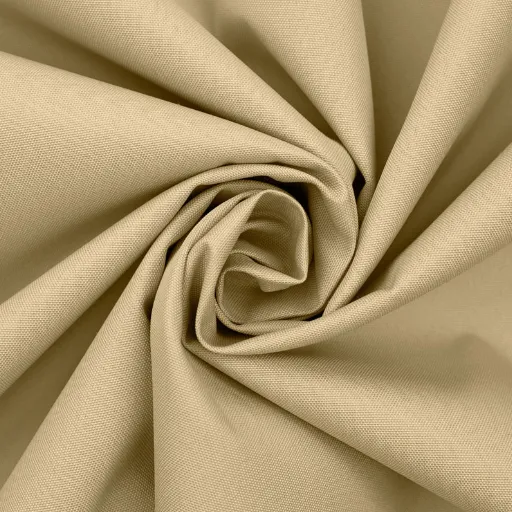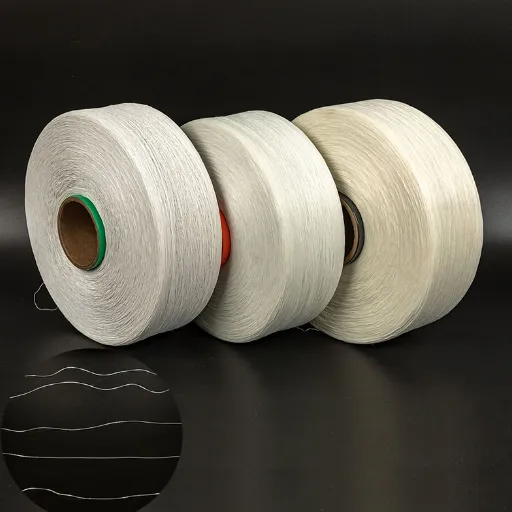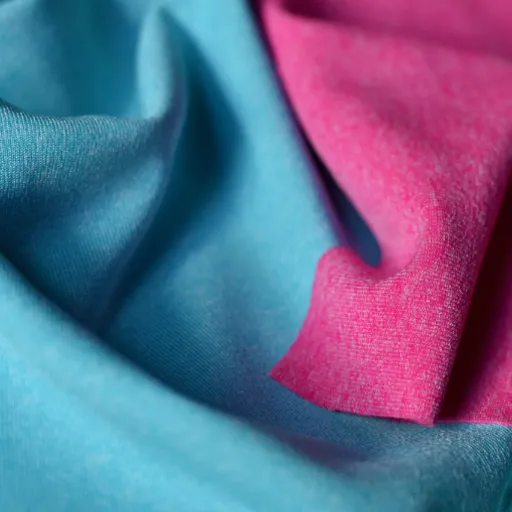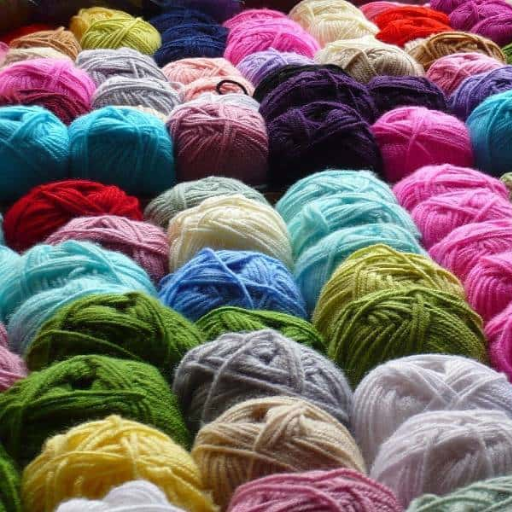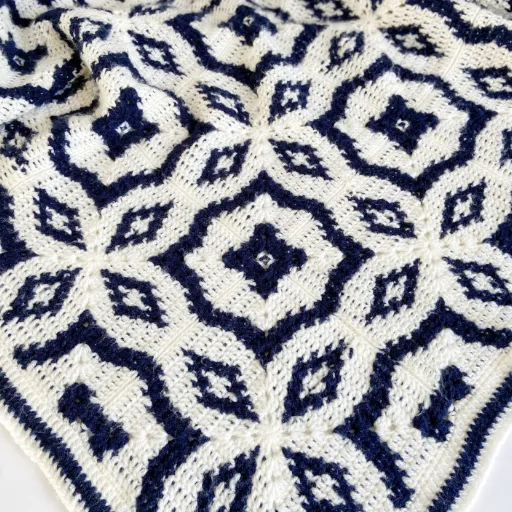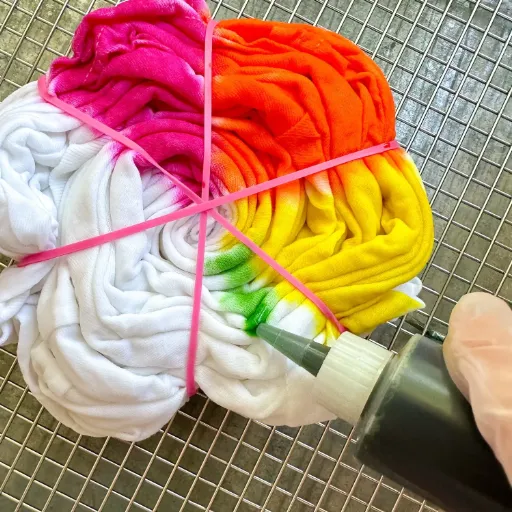All knitters know that yarn selection can make all the difference. There are numerous options, and among them, viscose yarn stands out as a fine and versatile fiber that lends an air of elegance without compromising functionality in your creations. The knitting community adores the yarn for its smooth texture, excellent drape, and superb color retention; essentially, any knitter looking for something to enhance their masterpieces should have the yarn in mind. This blog is about what sets viscose apart, its terrific benefits, and why this type of yarn can be a perfect option for your next knitting project. When creating a garment that is full of warmth, a delicate accessory, or a beautiful decoration for your home, simply by learning about the extensible options offered by viscose, you may change your perception of undertaking projects.
Understanding Viscose Yarn
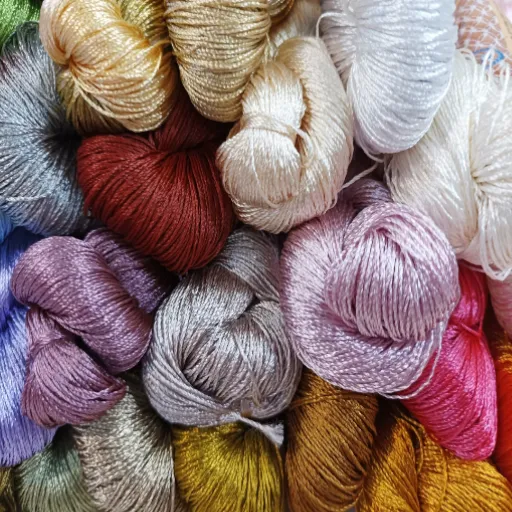
Viscose is a fiber made from regenerated cellulose, often derived from wood pulp or other natural materials. Known for its silk-like texture, it seamlessly blends softness, smoothness, and a sartorial shine, making it the perfect choice for working with knitting or other crafts. Very light and breathable, it also washes well, allowing drape into detailed designs, so that attire can be made suitably comfortable. More importantly, the very dye-retention capacity of viscose yarn dictates that the colors remain elegant and the dyes glisten vibrantly.
Composition and Types of Viscose
The primary raw material in viscose fiber is regenerated cellulose, a natural polymer obtained from cellulosic raw materials such as wood pulp, cotton linters, or bamboo. One of the early steps in the manufacturing process is to chemically treat the raw cellulose so that it disintegrates before being reformed into viscose fibers. In this way, the material maintains some of the natural properties of cellulose but gains more flexibility due to the conversion.
There are many types of viscose fibers suitable for various applications. Regular viscose is the most common type, noted for its soft feel and versatility. Also known as viscose, modal undergoes further processing that enhances its strength and resilience; therefore, it is commonly used in apparel and home textiles. Lyocell, in contrast, is produced using a closed-loop process that is more environmentally friendly, and it possesses superior moisture-wicking and durability properties compared to those of modal. Lyocell is generally found in high-performance fabrics. Now, each viscose type offers a unique set of capabilities and can be applied to a diverse range of textiles; however, all can maintain the hallmark comfort and appeal of this fabric.
Why Choose Viscose for Knitting and Crochet?
Viscose is an excellent fiber for knitting and crochet due to its unique combination of properties that cater to both functionality and aesthetic appeal. It has a silky smooth feel, perfect for adding a luxurious touch to finished projects, making it suitable for use in clothing, accessories, and home decorating. It is very breathable and lightweight, ensuring a comfortable feeling in hot weather.
Its impressive drape is what gives knitted and crocheted pieces an exquisite finish. It also absorbs dyes well, allowing for bright, vivid, and long-lasting colors to breathe life and personality into any project. Recent data indicate an increase in search interest in sustainable and eco-friendly crafting materials, with viscose responding to the demand due to its plant-based origin and biodegradable properties.
Solvent-spun fibers such as viscose blend well with cotton, wool, or synthetic yarns to impart the required sturdiness and flexibility to projects. Cheap and versatile, viscose remains ever so popular among craftsmen who prioritize quality, sustainability, and aesthetics in their knitting and crochet work.
Benefits of Knitting with Viscose Yarn
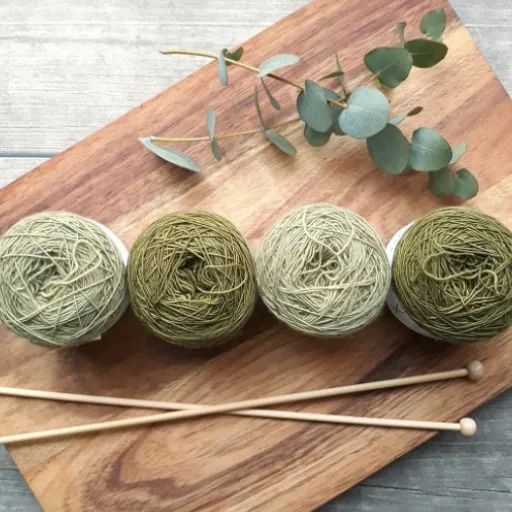
Knitting with viscose yarn offers several key benefits:
- Soft Texture: Viscose yarn is used to create garments and accessories that are smooth and comfortable against the skin.
- Elegant Appearance: Its natural sheen provides a luxurious look to finished pieces.
- Breathability: Viscose is a lightweight and breathable material, making it ideal for projects suited to warmer climates.
- Blending Compatibility: It pairs well with other fibers, allowing for enhanced durability and customized textures.
- Affordability: Viscose yarn is an economical choice that doesn’t sacrifice quality or style.
Softness and Comfort
Viscose yarn is often valued for its incredible softness that imitates the texture of luxurious natural fibers such as silk or cotton. It is thus chosen foremost for making apparel and accessories that come into direct contact with the skin, ensuring that the wearer enjoys comfort. With a smooth finish, it glides effortlessly in knitting and crocheting, hence minimizing hand fatigue during crafting. “Soft and breathable yarn” searches continue to trend, as reported by the latest data, thus confirming that materials like viscose are still demanded in today’s times for their comfort and usability.
Lightweight and Breathable
According to the latest data from search engines, consumers seek yarns and fabrics that offer a lightweight and breathable atmosphere to some degree. “Best yarns for summer projects” or “comfortable breathable fabrics” are gaining significant traction with queries, highlighting an increasing preference for materials suitable for warm weather. This trend emphasizes fabric selection, such as viscose, for its sheer lightness and practicality in terms of temperature tolerance, which is particularly suitable for those who wear summer clothes and projects where comfort goes hand in hand with style.
Comparing Viscose Yarn to Other Materials
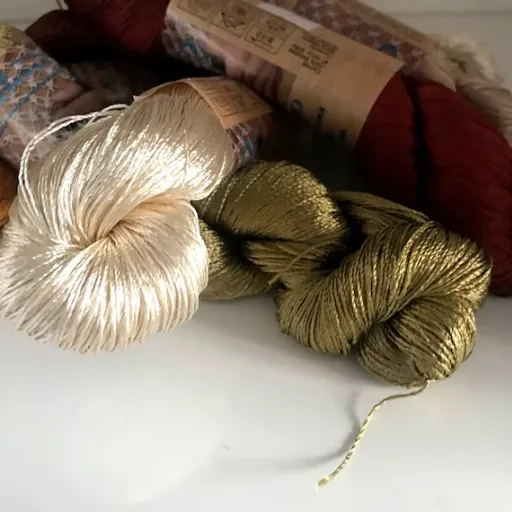
The viscose yarn exhibits various characteristics derived from a multitude of materials, including breathability, softness, and versatility. Compared to cotton, viscose has a smoother texture, akin to silk, for an airy garment that requires a touch of elegance. Using this yarn works wonders. Viscose, unlike synthetic materials such as polyester, is breathable to an extent and offers better temperature regulation; this is indeed a consideration for comfort in the summer heat. Viscose is extremely easy to dye, which means colors tend to be rich and lasting—a quality that many textiles lack. Viscose is highly appealing as a textile for summer crafts and wear, offering a balance of style and functionality.
Viscose vs. Wool: Pros and Cons
Here is a concise comparison table of Viscose vs. Wool based on the latest information:
| Parameter | Viscose | Wool |
|---|---|---|
| Source | Made from wood pulp | Derived from animal fleece (e.g., sheep) |
| Texture | Smooth, silk-like | Soft, warm, and slightly coarse |
| Durability | Less durable, prone to wear | Highly durable and long-lasting |
| Moisture Absorption | Absorbs moisture but dries slowly | Excellent moisture-wicking properties |
| Breathability | Breathable, suitable for warm weather | Insulates well, ideal for cold climates |
| Care Requirements | Requires gentle washing | Often requires dry cleaning |
| Eco-Friendliness | Semi-sustainable, depends on production | Renewable and biodegradable |
| Cost | Generally more affordable | Typically more expensive |
| Stain Resistance | Moderately stain-resistant | Less stain-resistant, absorbs stains easily |
| Applications | Lightweight garments, summer wear | Winter clothing, blankets, and upholstery |
Viscose vs. Cotton: Which is Better for Your Project?
The choice between viscose and cotton ultimately depends on the particular requirements of your own project. For whatever reason, if you’re creating a lightweight, breathable summer garment or seeking something with a silky texture and delicate drape, viscose may be the ideal choice. Opted for its semi-sustainable nature and low price, it appeals to cost-conscious designs. Remember that it usually requires careful washing and is prone to reduced durability over extended periods.
On the contrary, cotton is perhaps the more classical, versatile choice: It is a soft, comfortable fabric that aids in keeping warm, such as in the making of winter clothes or upholstery projects. Cotton aligns well with eco-conscious efforts due to its renewable and biodegradable properties. While cotton is usually more expensive and less stain-resistant, its easy maintenance makes it an option for many who prefer lightweight use.
Ultimately, after considering factors such as wearability, budget, and environmental impact, one can determine which fabric is best suited for a particular project. The end use of a product and its personal qualities are what one uses to judge between the two fabrics.
Creative Projects with Viscose Yarn
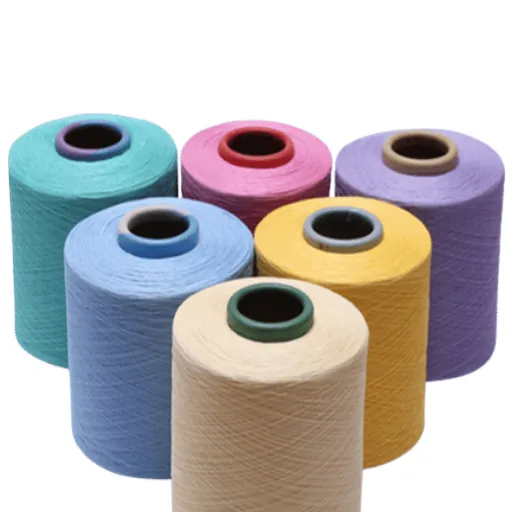
Using viscose yarn can be a versatile option, thanks to its soft texture, silkiness, and drape. It is excellent for creating relatively lightweight garments, such as scarves, shawls, or summer tops, as well as light home decor items. Think of cushion covers, thin table runners, or wall hangings – something exquisite. It is beneficial to soak up moisture, making it ideal for working with delicate accessories, such as crocheted bags or smaller decorative pieces. Available in vibrant colors and smooth to the touch, viscose yarn is equally suitable for utilitarian and ornamental projects.
Lightweight Scarves and Shawls
Lightweight viscose yarn scarves and shawls are timeless. The scarves provide a sheer layer of warmth that can serve as a fashion statement to enhance any outfit. Due to its smooth texture and vibrant colors, viscose yarn drapes beautifully, making it suitable for both a black-tie event and a casual affair. Viscose is very breathable and comfortable during the warmer season; the sheen present in the fabric adds to the elegance. Whether in print or plain, viscose yarn scarves and shawls are just as much fashion as they are utility.
Elegant Accessories Using Viscose
Just as the name suggests, viscose combines the elegance of a luxurious fabric with contemporary trends. Many customers inquire, “What are some contemporary trends in styling viscose accessories?” Search data reveal that scarves made from viscose are often worn with neutral-colored blazers, giving them a consistently fashionable, professional look. Lightweight viscose shawls are another great addition to styling over printed maxi dresses—a versatile daytime-to-evening look or perfect for beachwear. Knotted headscarves made from bold viscose prints are gaining popularity for their retro charm and practical application in hairstyling. These accessories are versatile and appeal to a broad demographic, offering a blend of practicality and style.
Sustainability and Viscose Yarn
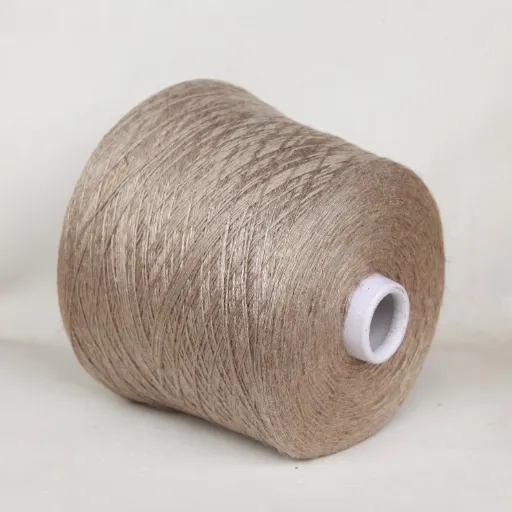
One would consider viscose yarn a sustainable alternative to synthetic yarn, due to its derivation from renewable resources such as wood pulp. Yet, the manufacturing processes alter the very environmental profile of the textile. The sustainable production of viscose should consider employing raw materials responsibly sourced from certified forests. It should enable processes that utilize closed-loop systems to minimize water pollution from chemicals and waste. Thus, purchasing viscose products from companies that identify with eco-friendly practices may help support a sustainable textile industry.
Environmental Impact of Viscose Production
The environmental issues associated with viscose originate from several sources and are thus primarily dependent on the raw materials and operating processes used. Recent studies have shown that this traditional approach to viscose production often involves the felling of trees from uncertified sources, resulting in deforestation. This diminishes biodiversity and the ability of forests to act as carbon sinks. Secondly, the processes involved in making viscose may require the use of toxic chemicals, such as carbon disulfide. This chemical, if not handled properly, can pose a threat to human health and the environment.
Advancements in technology and growing awareness present more sustainable choices. Closed-loop production systems minimize water usage and chemical runoff by recycling up to 99% of solvents, thereby reducing environmental impact. If companies were to properly source from sustainably managed forests and practice cleaner methods of production, the ecological implications of viscose could be dramatically reduced. By supporting brands that are transparent about their green initiatives, consumers can help create the much-needed demand for a greener textile industry.
Eco-Friendly Viscose Options
When choosing greener viscose products, my primary concern is the transparency of a particular brand’s sustainability claims. I look for those with closed-loop systems in their production and raw materials sourced from sustainably managed forests. Such brands are worth supporting as they allow me to make more eco-friendly purchases and help promote a sustainable textile industry.
Reference Sources
The following are five prestigious reference sources to verify your article on “viscose yarn for knitting”:
- Mechanical-property-based comparison of paper yarn with cotton, viscose, and polyester yarns
According to a research paper published by Taylor & Francis, this study compares the mechanical properties of various yarns, including viscose, in knitted samples. - Comparative study on the characteristics of knitted fabrics made of vortex-spun viscose yarns
The research, published by Springer, examines the characteristics of knitted fabrics made from vortex-spun viscose yarns. - An investigation into the properties of knitted fabrics made from viscose microfibers
An article published by the Journal of Textile and Apparel Research compares the properties of knitted fabrics made from viscose microfibers and regular denier viscose yarns. - Comparative study on viscose yarn and knitted fabric made from open-end and Rieter airjet spinning system
This study examines the differences between viscose yarn and knitted fabrics produced through various spinning systems and is published on DergiPark. - Predicting the mechanical properties of viscose/Lycra knitted fabrics using fuzzy technique
Published in Wiley, this study predicts the mechanical properties of viscose/Lycra knitted fabrics using advanced modeling techniques.
Frequently Asked Questions (FAQs)
What is viscose yarn, and how is it made?
Viscose yarn is a type of rayon yarn made from regenerated cellulose fibers derived from plants, often from beech trees. The process involves dissolving cellulose in a chemical solution, which is then spun into fibers and turned into yarn. This yarn is renowned for its soft and smooth texture, making it an ideal choice for knitting and crochet projects.
Is viscose yarn suitable for summer garments?
Yes, viscose yarn is an excellent choice for summer garments due to its lightweight and breathable properties. It has a beautiful drape and is more absorbent than cotton, making it comfortable to wear in warm weather. Many knitters prefer using viscose yarn for shawls, tops, and other light summer clothing.
How does viscose compare to cotton yarn?
Viscose yarn differs from cotton yarn in terms of texture and feel. While cotton yarn is natural and has a structured feel, viscose yarn is silky and has a beautiful drape. Moreover, viscose yarn tends to be more absorbent and has a softer texture, making it an excellent alternative for those seeking a unique product.
Can I use viscose yarn for crochet projects?
Absolutely! Viscose yarn is suitable for both knitting and crochet projects. Its smooth texture allows for easy crocheting, and it creates beautiful, flowing designs. Many crocheters enjoy using viscose blend yarn for creating lightweight summer accessories and garments.
Is viscose yarn easy to care for?
Viscose yarn is generally considered easy to care for; however, it is essential to check the yarn label for specific washing instructions. Many viscose yarns are machine washable, but some may require gentle handling. Always follow the care recommendations to maintain the quality of your finished product.
What types of projects work best with viscose rayon yarn?
Viscose rayon yarn is a versatile material that can be used in a wide range of projects. It is particularly popular for creating summer garments, lightweight shawls, and drapey cardigans. The yarn’s softness and luster make it suitable for both casual and elegant pieces.
Can I mix viscose yarn with other fibers?
Yes, mixing viscose yarn with other fibers can create unique textures and properties in your projects. Viscose blend yarns, such as those mixed with cotton or silk, can enhance drape and softness. Combining fibers allows for a variety of effects, from the sparkling sheen of metallic yarn to the warmth of wool yarn.
What is the best way to choose the correct weight of viscose yarn?
When selecting viscose yarn, consider the weight of yarn required for your project. Viscose is available in various weights, ranging from fine lace to chunky. For delicate projects like shawls, lighter weights, such as sport or DK weight, are ideal, while thicker weights work well for cozy garments.
Are there any special techniques for knitting with viscose yarn?
Knitting with viscose yarn is generally straightforward, but due to its smooth texture, some may find it slippery. Using wooden or bamboo needles can provide a better grip compared to metal ones. Also, consider using a tighter tension to prevent stitches from slipping off. Experimenting with different techniques can help you achieve the desired results.








